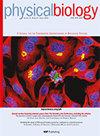Spatiotemporal feedforward between PKM2 tetramers and mTORC1 prompts mTORC1 activation
IF 2
4区 生物学
Q4 BIOCHEMISTRY & MOLECULAR BIOLOGY
引用次数: 0
Abstract
Most mammalian cells couple glucose availability to anabolic processes via the mTORC1 pathway. However, the mechanism by which fluctuations in glucose availability are rapidly translated into mTORC1 signals remains elusive. Here, we show that cells rapidly respond to changes in glucose availability through the spatial coupling of mTORC1 and tetramers of the key glycolytic enzyme pyruvate kinase M2 (PKM2) on lysosomal surfaces in the late G1/S phases. The lysosomal localization of PKM2 tetramers enables rapid increases in local ATP concentrations around lysosomes to activate mTORC1, while bypassing the need to elevate global ATP levels in the entire cell. In essence, this spatial coupling establishes a feedforward loop to enable mTORC1 to rapidly sense and respond to changes in glucose availability. We further demonstrate that this mechanism ensures robust cell proliferation upon fluctuating glucose availability. Thus, we present mechanistic insights into the rapid response of the mTORC1 pathway to changes in glucose availability. The underlying mechanism may be applicable to the control of other cellular processes.PKM2四聚体和mTORC1之间的时空前馈促使mTORC1激活
大多数哺乳动物细胞通过mTORC1途径将葡萄糖的可用性与合成代谢过程耦合。然而,葡萄糖可用性的波动被快速转化为mTORC1信号的机制仍然难以捉摸。在这里,我们发现,在G1/S晚期,细胞通过mTORC1和溶酶体表面关键糖酵解酶丙酮酸激酶M2(PKM2)四聚体的空间偶联,对葡萄糖可用性的变化做出快速反应。PKM2四聚体的溶酶体定位使溶酶体周围的局部ATP浓度快速增加,从而激活mTORC1,同时绕过了提高整个细胞中整体ATP水平的需要。本质上,这种空间耦合建立了一个前馈回路,使mTORC1能够快速感知和响应葡萄糖可用性的变化。我们进一步证明,这种机制确保了在葡萄糖可用性波动时细胞的强大增殖。因此,我们对mTORC1通路对葡萄糖可用性变化的快速反应提供了机制上的见解。潜在的机制可以应用于对其他细胞过程的控制。
本文章由计算机程序翻译,如有差异,请以英文原文为准。
求助全文
约1分钟内获得全文
求助全文
来源期刊

Physical biology
生物-生物物理
CiteScore
4.20
自引率
0.00%
发文量
50
审稿时长
3 months
期刊介绍:
Physical Biology publishes articles in the broad interdisciplinary field bridging biology with the physical sciences and engineering. This journal focuses on research in which quantitative approaches – experimental, theoretical and modeling – lead to new insights into biological systems at all scales of space and time, and all levels of organizational complexity.
Physical Biology accepts contributions from a wide range of biological sub-fields, including topics such as:
molecular biophysics, including single molecule studies, protein-protein and protein-DNA interactions
subcellular structures, organelle dynamics, membranes, protein assemblies, chromosome structure
intracellular processes, e.g. cytoskeleton dynamics, cellular transport, cell division
systems biology, e.g. signaling, gene regulation and metabolic networks
cells and their microenvironment, e.g. cell mechanics and motility, chemotaxis, extracellular matrix, biofilms
cell-material interactions, e.g. biointerfaces, electrical stimulation and sensing, endocytosis
cell-cell interactions, cell aggregates, organoids, tissues and organs
developmental dynamics, including pattern formation and morphogenesis
physical and evolutionary aspects of disease, e.g. cancer progression, amyloid formation
neuronal systems, including information processing by networks, memory and learning
population dynamics, ecology, and evolution
collective action and emergence of collective phenomena.
 求助内容:
求助内容: 应助结果提醒方式:
应助结果提醒方式:


